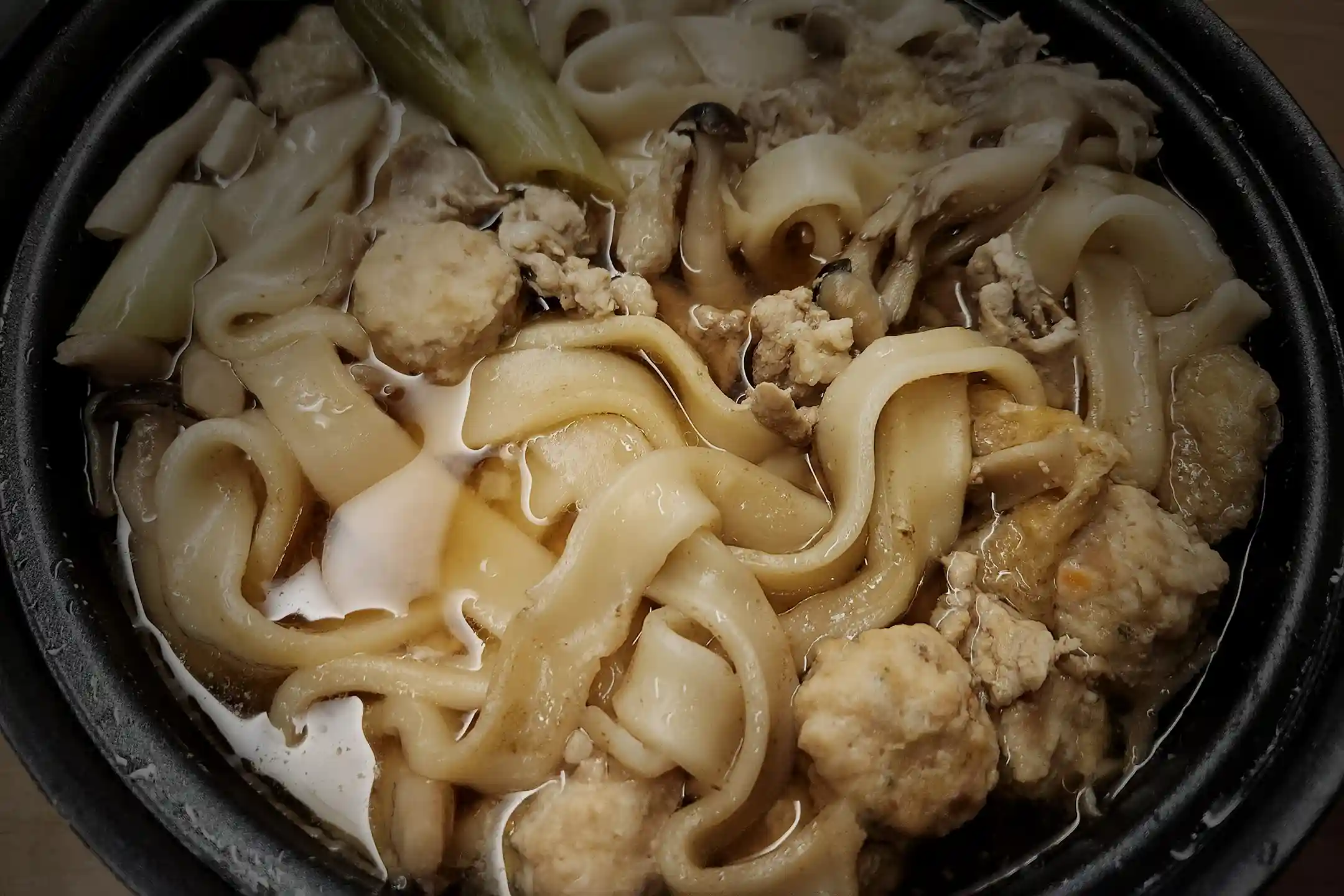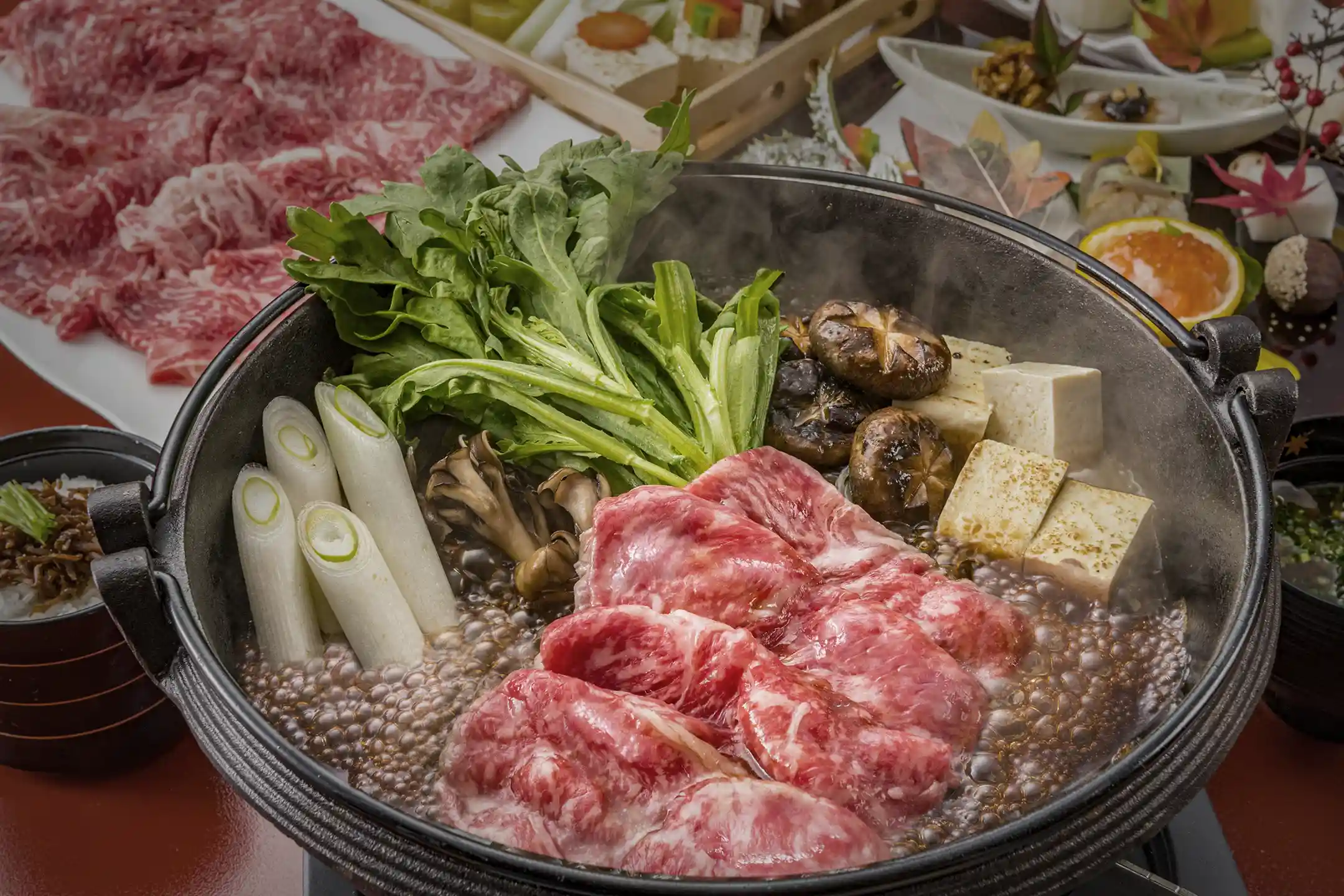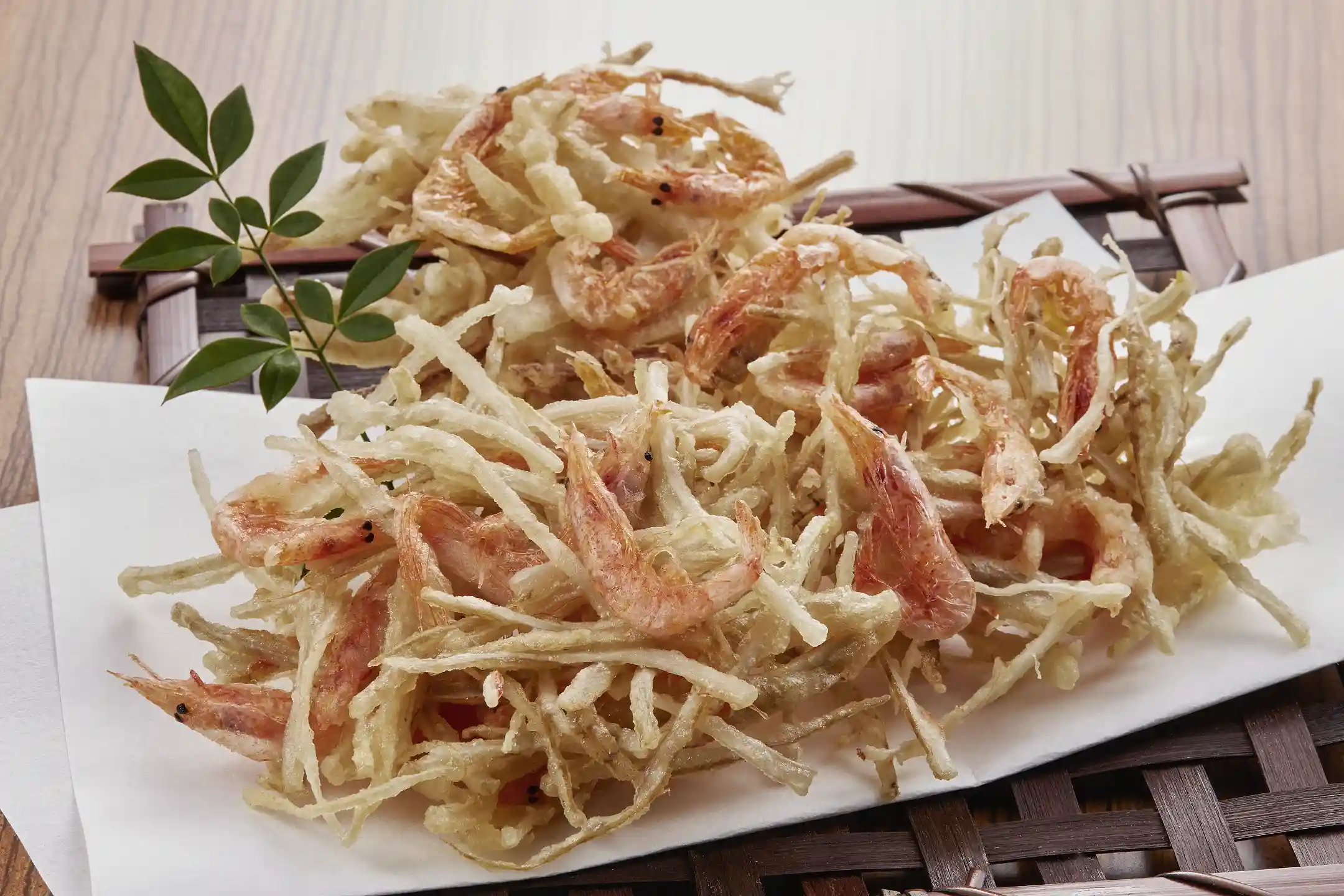Japan boasts an incredible array of regional cuisine, shaped by its four distinct seasons, varied climates across regions, and rich history and culture. For travelers from Europe and North America, the bustle of local markets and Japan’s unique dining customs might appear exotic at first. However, rather than viewing them merely as “curiosities,” having a mindset that respects each other’s culture and strives for deeper understanding can greatly enrich one’s culinary experience in Japan. Keeping an awareness of Orientalism and avoiding an overly “othering” perspective is key; remember to savor these dishes alongside the local people and their way of life, always with the diversity of cultural backgrounds in mind.
From Tsukiji and Nishiki markets to Osaka, Hakata, and Okinawa, exploring local gourmet spots is a wonderful chance to observe tradition, sustainability, and emerging social trends. In this article, we’ll not only delve into the background of food culture across Japan but also introduce the perspective of “sustainable travel,” which is receiving increasing attention for its environmental and societal considerations. We hope you’ll stay with us until the end.
The Appeal of Exploring Japan’s Local Cuisine and Markets
When traveling in Japan, discovering the local climate, history, and how these are intimately connected to the region’s cuisine can make your trip all the more enjoyable. From an international perspective, some might say, “Japan looks the same wherever you go,” but through the lens of cultural relativism, you’ll find an astonishing diversity among each area. By unraveling the stories behind local dishes, the natural environment and cultural background of each region come to light, offering valuable insights into how people live.
For example, foods preserved to endure cold climates, or dishes brimming with fresh seafood thanks to abundant marine resources, often reflect long-standing traditions and customs. From a Western cultural viewpoint, you may be surprised by unfamiliar combinations of ingredients. Meanwhile, touring local markets allows you to experience the lively exchanges between merchants and customers—a testament to the strong sense of community unique to Japan. Engaging deeply in these local food experiences goes beyond a simple gourmet tour, offering a chance to encounter people’s values, history, and even their efforts toward a more sustainable future.
Notably, many regions in Japan are actively promoting “local production for local consumption” and reducing food waste. These efforts are directly linked to supporting local economies, protecting the environment, and revitalizing local communities; even buying locally sourced ingredients at markets can significantly contribute to these goals. As tourism grows, concerns about “cultural appropriation” can arise. Yet by communicating respectfully and engaging in local food culture in a mutual exchange, visitor and host alike can foster greater understanding and closeness, creating a positive form of “cultural exchange.”
Tokyo—Experience the Essence of Edo and Cutting-Edge Culture at Tsukiji Fish Market

Historical Background Shaping Tokyo’s Food Culture
When you think of Tokyo, you might imagine modern skyscrapers. But its culinary roots trace back to the Edo period (1603–1868), when it was a bustling city of commoners, and it retains a unique “Edo-mae” (literally “in front of Edo”) food culture centered on seafood from Tokyo Bay (*1). Sushi and tempura, which began as street stall fare, were born out of the need for quick yet satisfying meals for busy samurai and craftsmen—a concept that in some ways parallels fast food abroad, but with the added element of artisanal craftsmanship.
Originally, nigiri sushi was large—about the size of a rice ball—and often eaten standing up, while tempura was a fragrant street-food favorite fried in sesame oil (*1). The fact that cuisine was depicted in ukiyo-e prints and rakugo storytelling suggests that “eating” was not just about nutrition but also about entertainment, adding a lively dimension to the city’s culture.
Must-See Spots—Tsukiji Fish Market & Tsukiji Outer Market
Although the main functions of the Tsukiji Fish Market have been relocated to Toyosu, Tsukiji Outer Market still has about 460 shops and continues to bustle as “Tokyo’s kitchen” (*2). As you wander the outer market, you’ll see many visitors from Europe and North America. Some shop owners may be hesitant about photographs being taken, reflecting an underlying issue of “othering.” While visitors might find the sights of a Japanese market fascinating and snap photos, it’s important to remember that privacy and business considerations matter to the locals.
On the other hand, with friendly communication, shopkeepers might be happy to show you how to pick the freshest fish or even offer a taste of seafood. If you greet them as fellow enthusiasts supporting the local food culture, you’ll likely discover the warm hospitality unique to Tsukiji. Tucking into sushi or tamagoyaki (rolled omelet) for breakfast is a classic choice. While exploring, be mindful of etiquette: avoid carrying large luggage, refrain from eating while walking, and respect the traditions of this historic market (*3).

Signature Local Dishes—Edo-mae Sushi, Tempura, and Monjayaki
If you’re in Tokyo, Edo-mae sushi and tempura are must-tries, along with monjayaki from the old downtown district. While sushi and tempura are familiar to many foreign visitors, monjayaki might still be relatively unknown. It involves grilling a batter with plenty of cabbage on an iron plate—a style that could look odd to some from abroad. However, recognizing these dishes through the lens of cultural relativism allows for a genuine appreciation of culinary diversity (*4, *5).
When recreating Japanese dishes elsewhere, be aware that excessively “creative” takes can risk being labeled as cultural appropriation if they over-simplify or caricature a long-nurtured food tradition. Showing respect for the culture cultivated over centuries is ultimately the key to fostering a deeper mutual understanding.
Travel Tips to Savor Cutting-Edge Technology and Sustainability
Tokyo’s modernity is not to be overlooked. The city’s advanced logistics systems, widespread adoption of electric vehicles, and other green transportation options are on par with many Western nations, creating a fascinating coexistence between cutting-edge technology and traditional culture.
Many hotels and restaurants in Tokyo actively embrace local sourcing and food waste reduction (*6). By participating in these initiatives, travelers can help build a more sustainable society while enjoying the city. For instance, having breakfast at Tsukiji, learning about Edo culture at Kabuki-za or the Edo-Tokyo Museum, and traveling on foot or via public transit all contribute to lowering carbon emissions. Tokyo’s unique charm lies in experiencing its rich history and culture while also engaging with global SDGs perspectives.
Kyoto—Exploring the Refined “Kyoto Food” and Nishiki Market in the Ancient Capital

Kyoto’s Food Culture and a Millennium of History
Shaped by the unique geography of a basin and a history spanning from the Heian period (794–1185) onward, Kyoto’s cuisine has evolved under the influence of imperial courts, samurai culture, and Zen teachings (*1, *2). Characterized by a light seasoning that highlights dashi (soup stock), it also places great emphasis on seasonal presentation through its choice of tableware and plating.
Underlying Kyoto cuisine is a spirit of hospitality and a deep appreciation for the changing seasons, rooted in the idea of “ichigo-ichie” (treasuring each moment). Visitors from Europe or North America may find it “simple yet profoundly flavorful,” but behind this simplicity lies centuries of aesthetic pursuit unique to Japan, informed by political, religious, and artistic developments across the ages.
Nishiki Market—Savoring “Kyoto’s Kitchen”
Located in the heart of the city, Nishiki Market stretches about 390 meters and is home to over 130 shops, some of which have been operating for hundreds of years (*3). Kyoto vegetables, tofu, yuba (tofu skin), namafu (wheat gluten), pickles, and wagashi sweets line the stalls, creating a colorful and exotic spectacle for first-time visitors. However, if one views “traditional Japanese cuisine” merely as “healthy and light,” the techniques and historical context behind these foods risk being consumed simply as “novelties.”
From the perspective of intersectionality, the people sustaining Kyoto’s culinary heritage range from longstanding artisans to younger entrepreneurs, representing diverse backgrounds. Talking with a tour guide and listening to each shop’s unique story can offer a richer, more pluralistic insight into the notion of “tradition.” Sampling pickles or learning about tofu-making methods along the way can be an enjoyable and educational experience for tourists (*4, *5).

Signature Local Dishes—Kaiseki, Yudofu, Namafu, and Obanzai
No discussion of Kyoto cuisine would be complete without mentioning kaiseki, which has deep ties to the tea ceremony and is crafted as though each dish were a work of art (*6). Meanwhile, dishes like yudofu (tofu hot pot), namafu, and obanzai (traditional home-style side dishes) offer a glimpse into everyday Kyoto life, distinct from the grandeur of formal kaiseki dining. Obanzai in particular embodies a “waste not” mentality, making it an environmentally friendly eating habit (*7). Visitors from abroad may be surprised to discover that reuse and frugality are so culturally esteemed.
These culinary traditions also have an interesting history from a feminist and gender-studies viewpoint. In Japan, cooking at home was long considered women’s work; it was often the wives and mothers in households who passed down these subtle flavors and delicate presentation styles. Reflecting on how their efforts shaped Kyoto’s food culture may inspire an even deeper appreciation when you taste these dishes.
Tips for Balancing a Quality Stay with Cultural Experiences
To fully immerse yourself in Kyoto’s ambiance, consider staying in a traditional machiya or ryokan, and try your hand at making matcha or wagashi (traditional sweets) (*8, *9). While these accommodations differ from a typical B&B or homestay in Europe or North America, the characteristic charm of traditional Japanese architecture will make your trip all the more memorable.
Kyoto also encourages sustainable transportation like public transit and bicycle rentals, allowing visitors to feel closer to local life (*10). That said, it’s important to remember that Kyoto is a popular destination, and consideration for crowds and residential areas is crucial. Cultivating mutual respect between local residents and visitors is a universally significant theme—and an especially important aspect of cultural relativism. By traveling in a manner that respects and coexists with the local community, you’ll enrich your Kyoto experience even more.
Osaka—Enjoy the “Osaka Food” in the City of Gastronomic Indulgence
The Formation of Osaka’s Food Culture
During the Edo period, Osaka was known as “the nation’s kitchen,” a bustling hub of commerce and distribution where rice, seafood, and specialty products arrived from all over Japan (*1). With merchants always coming and going, the city developed a strong culture of hospitality through good food, focusing on providing “delicious meals at reasonable prices.” This practical mindset combined with a strong sense of service eventually fostered the reputation of “the city where you eat till you drop” (*2).
This background also offers insights into how Osaka deals with “ethnocentrism.” Being a place where diverse people and goods converged, Osaka nurtured a flexibility that recognizes a variety of values, rather than believing one’s own viewpoint is the absolute norm. Perhaps this is why the city is known for its warm, welcoming spirit toward international visitors.

When it comes to Osaka’s culinary scene, “flour-based cuisine” (konamon) is iconic (*3). Okonomiyaki and takoyaki have gained global fame in recent years, thanks in part to international students and working holiday participants introducing them abroad. Takoyaki, crispy on the outside and soft inside, or okonomiyaki topped with sweet-and-savory sauce can be quite addictive once you try them.
Meanwhile, kushikatsu is a dish of skewered ingredients deep-fried and dipped in a sweet sauce—an everyday food with roots in working-class neighborhoods of the Showa era. Nowadays, creative kushikatsu made with premium ingredients are also popular, striking a balance between casual and refined dining (*4).
Stimulating Intellectual Curiosity in a Lively City
Osaka’s charm goes beyond food. Exploring Osaka Castle or the Osaka Museum of History can shed light on the city’s merchant culture, while strolling around the modern skyscrapers in Umeda or Namba reveals a unique blend of history and a futuristic spirit (*5, *6). With its vibrant neon signs, Dotonbori resembles a “showy” urban space akin to certain Western cities, yet with a distinctly Japanese flair for eye-catching signage.
In anticipation of the 2025 Osaka World Expo, initiatives around the SDGs and food waste reduction are gaining traction. Examples include menus featuring unutilized ingredients and stalls using edible containers—environmental awareness blending with entertainment in ways that rival advanced Western examples (*7, *8). Osaka’s constant embrace of change makes it an exciting place to see forward-thinking projects in action.
Fukuoka—Tradition Meets Innovation in “Hakata,” Blessed by Sea and Mountains

History and Environment Shaping Fukuoka’s Food Culture
Fukuoka has long served as Japan’s gateway to the Asian continent, flourishing through interactions with neighboring countries. Its geographical advantages include the Genkai Sea to the north and the fertile Chikushi Plain and mountains inland, ensuring an abundance of both marine and agricultural resources. In medieval times, an official guesthouse called Kourokan was established along Hakata Bay, facilitating active exchanges with China and Korea; this blend of influences gave rise to Fukuoka’s richly varied food culture.
The city’s renowned yatai (street stall) scene exemplifies this. While those from Europe or North America may associate street food with casual outdoor eats, many of Fukuoka’s yatai are long-standing businesses with decades of history, forming a unique community. Tourists and locals often share the same counter, making it easy to strike up conversations that lead to mutual understanding—one of the city’s distinct charms.

Signature Dishes—Hakata Ramen, Mentaiko, Mizutaki, and Goma Saba
If you visit Fukuoka, don’t miss its iconic Hakata ramen, featuring a creamy pork-bone broth. The local custom of “kaedama” (refilling noodles) and choosing noodle firmness—such as “harigane,” meaning “extra firm”—may surprise some from abroad, yet it’s a practical system reflecting local tastes.
Meanwhile, mentaiko (spicy cod roe), which originated from Korean culinary influences, is now a flagship Hakata specialty known throughout Japan. Its open sharing of production methods (no patents were taken) rapidly improved quality across the board, boosting its industry. This exemplifies how food culture can be treated as a “public good.” In addition, dishes like mizutaki (chicken hot pot) and goma saba (sliced mackerel with sesame sauce) showcase Fukuoka’s preference for fresh ingredients and simple preparation that highlight natural flavors. You’re sure to be delighted by these local recipes that bring together the best of land and sea.
Balancing Modern City Life and Natural Settings
With a population of around 1.6 million, Fukuoka is a major city, yet nature is never far away—beaches and rural areas are easily accessible. Compared to many large Western cities, Fukuoka offers a short distance from its urban center to coastal spots or countryside towns, allowing visitors to enjoy a wide variety of landscapes and culinary experiences, even during a short stay. Initiatives such as sustainable fishing, which combine environmental conservation with tourism, provide valuable learning opportunities as well as recreation, making Fukuoka a rewarding destination for eco-conscious travelers.
Okinawa—The Allure of Subtropical “Okinawa Food” and Island Culture
Okinawa’s History and Culinary Traditions
From the 15th century onward, the Ryukyu Kingdom prospered through maritime trade with China, Japan, and Southeast Asia, giving Okinawa a uniquely multicultural backdrop. After World War II, the region experienced U.S. occupation and later reversion to Japan, all the while preserving its local language (Uchināguchi), sanshin music, and Eisa dance. At the same time, global cultural influences have been woven into its distinctive style. Many visitors from abroad are surprised by the blending of American and Asian touches in its local food scene.
Fundamentally, Okinawan cuisine draws on the idea of “ishoku dogen” (food as medicine). Dishes like goya champuru, rafute, and soki soba offer balanced nutrition and are integral to daily life. While these dishes may look quite exotic from a Western perspective, they are the product of historical exchanges and the local wisdom nurtured in this subtropical environment.
Signature Local Dishes—Goya Champuru, Rafute, Soki Soba, and Sata Andagi
Goya champuru is perhaps the most iconic Okinawan dish, featuring vitamin- and mineral-rich bitter melon, tofu, pork, and eggs. Enjoying bitterness stands in contrast to areas that favor sweet flavors, symbolizing the “diversity of taste.” Rafute and soki soba both reflect Okinawa’s strong tradition of pork dishes, influenced by Chinese cuisine and the legacy of the Ryukyu court. These collagen-rich delights have many devoted fans.
Sata andagi is an Okinawan-style donut often made with brown sugar, known for its crispy outside and fluffy inside. It’s a fixture at festivals and celebrations, beloved as a familiar island snack. Comparing these sweets to confectionery in Europe or North America can be a fun cultural exploration in itself.
Eco-Tourism and Art Experiences Unique to the Islands
Okinawa’s subtropical climate supports coral reefs, mangroves, and other natural treasures, driving vibrant eco-tourism efforts such as coral conservation and mangrove cleanups. Traveling with environmental awareness fosters an understanding of preserving these beautiful islands for future generations. Meanwhile, traditional crafts like bingata dyeing and yachimun pottery (both with 500+ years of history) allow visitors to tap into the “artistic DNA of the islands.”
Recently, more accommodations in Okinawa are adopting EVs and integrating solar power for off-grid villas, presenting a sustainable yet luxurious travel option. While “glamping” and eco-resorts are trending in Europe and North America, Okinawa is likewise seeing rapid growth in eco-friendly lodging that values harmony with nature. From the perspective of queer theory, Okinawa’s historical blend of influences has nurtured a welcoming attitude toward diversity, and LGBTQ+-friendly accommodations are on the rise. Having gone through a complex history, the local society shows an openness to diversity that can be particularly comforting for travelers from all walks of life.
Conclusion—A Journey Through Japan’s Regional Cuisine
In this article, we explored local specialties across Japan—from Tsukiji Market and Nishiki Market to Osaka’s “flour-based” dishes, Hakata ramen and mentaiko in Fukuoka, and the champuru cuisine of Okinawa. Each region’s flavors have been shaped by a blend of Japan’s natural and cultural heritage, alongside foreign influences. When examining these cuisines in contrast to Western culture, we must be mindful of Orientalism and cultural appropriation; however, this mindfulness is a vital part of fostering mutual understanding that goes beyond mere “food tourism.”
Engaging directly with producers and shopkeepers at local markets, choosing green transportation like EVs or public transit, and patronizing restaurants or programs that reduce food waste—each of these acts can spark new insights for both visitors and hosts, helping to cultivate the region’s future together. As you savor Japan’s various local dishes, consider the history, culture, and sustainability woven into each bite. You’ll find a deeper sense of discovery and wonder that goes far beyond mere deliciousness.
Author Bio

Maoko Shibuya
Content Planner & Writer Holding a master’s in Digital Marketing and experience across global markets, Maoko blends international perspective with a deep appreciation for Japan’s cultural heritage. She plans and writes compelling narratives that reveal the country’s beauty and depth, drawing on her passion for travel, local cuisine, and cultural exploration.





/Kazunoko%20Matsumae-zuke%20(Herring%20Roe%20and%20Seafood%20Pickles).webp)